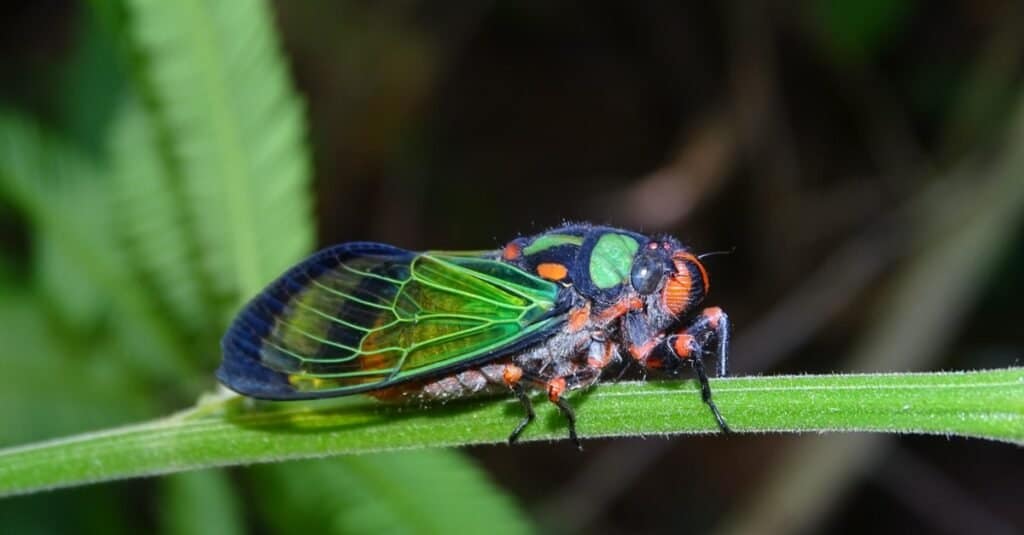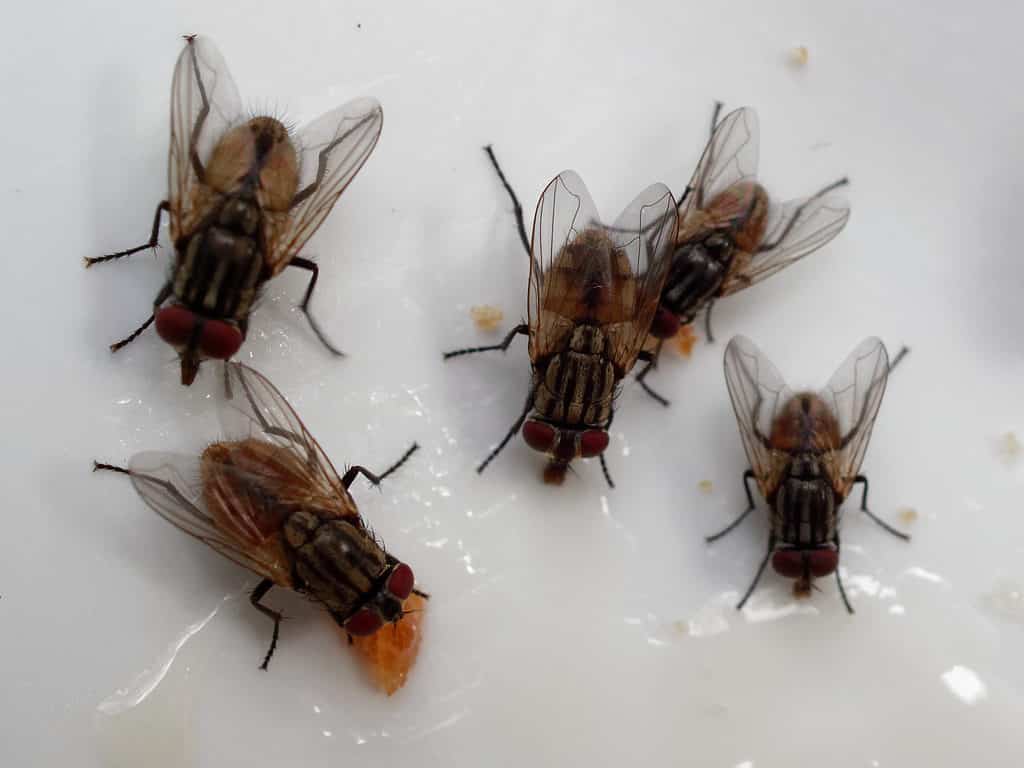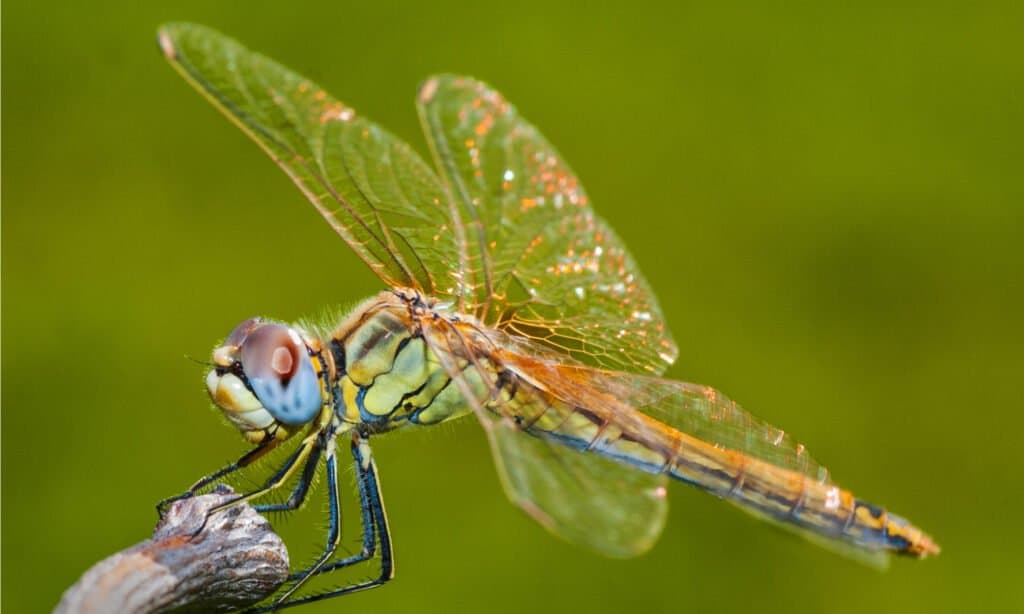It has long been known and documented that insects, in terms of the sheer number of different insect species, are the most varied group of organisms. There are around 900,000 identified insect species in the world. This equates to about 80% of all species on Earth! Beetles, bees, and related insects, bugs, flies, butterflies, crickets, and dragonflies make up the bulk of the insect kingdom. In this post, we’ll look at these seven different types of insect families and how they’re classified.
Beetles

A cedar beetle.
©Ezume Images/Shutterstock.com
Beetles are the first of the seven different types of insects to explore. Almost half of all bug species are beetles, all of which belong to the order Coleoptera. With over 300,000 described species, Coleoptera easily takes the crown as the most numerous animal order. There are likely millions of hitherto unknown species of beetles.
About 270 million years ago, beetles appeared. Insects resembling beetles first appeared in the fossil record during the Permian Era, some 270 million years ago.
Bees and Related Insects

Green orchid bee
©Marco Lissoni/Shutterstock.com
Hymenoptera is an order that includes bees, wasps, and ants. They’re called “vegetarian fuzzy wasps” because, unlike most carnivorous wasps, they feed exclusively on pollen and have feathery hairs specifically for collecting it. There are more than 150,000 reported extant Hymenoptera species and around 2,000 are classified as extinct.
Despite the fact that many species of bees are parasitic, they are essential to the growth of not only wild flora but also over half of the vegetables and fruits consumed by humans every day. As a result, millions of humans and other animals could starve to death if agriculture were to cease.
Bugs

Beautiful cicada – Carineta diardi
©Marcos Cesar Campis/Shutterstock.com
Did you know that while every bug is an insect, every insect is not a bug? There is a lot of misunderstanding between bugs and insects. The mouthparts of true bugs are adapted for piercing and sucking, making them easy to identify. The order Hemiptera is home to many different kinds of bugs, including aphids, assassin bugs, cicadas, ants, and many more.
Flies

A group of houseflies
©iStock.com/PattayaPhotography
The next of the seven different types of insects to study are flies. After Hymenoptera, flies make up the biggest family of pollinators. The Greek word for “two-winged” describes the insects that make up the order Diptera, which includes flies. From fruit flies and house flies to meat flies and blow flies, there are over 110,000 species of flies in the world, each with its own set of preferred conditions for living. Flies are common and widespread, inhabiting nearly all terrestrial environments on every continent except Antarctica.
There are many plants that bees don’t like, but that can be pollinated by insects like bee flies, hoverflies, and midges. If you’re craving chocolate, you can thank midges. Small flies like this play a crucial role as cacao tree pollinators.
Butterflies

Painted lady
butterfly
©Super Prin/Shutterstock.com
Butterflies, along with moths and skippers, are members of the order Lepidoptera, which includes other insects with scaly wings. They are easily recognizable due to their big, colorful wings and their distinctive, flapping motion. Over 24,000 different kinds of butterflies exist today. Memorizing all butterfly species may take longer than expected. Starting with the US lower 48 species is simpler. We recommend note cards or focusing on butterflies in your yard this spring and summer.
Worldwide, there are over 140,000 different species of moths. Butterflies descend from moths, with the earliest Lepidoptera fossils dating back to the Jurassic period, some 190 million years ago. These fossils belong to a little moth called Archaeolepis mane.
Crickets

Mormon Cricket
©iStock.com/Triggermouse
Crickets range in size from tiny to moderate, and their bodies are typically cylindrical but somewhat flattened vertically. Their constant, loud chirping is what gives them away. In many societies, crickets serve as both a source of food and entertainment. Although they share an order with grasshoppers and katydids, these insects are easily distinguished by their longer antennae and distinctive mating, rivalry, and cooperation songs.
Crickets come in a broad variety of shapes and sizes (from 3 mm to 50 mm) and colors. The field cricket, the camel cricket, and the house cricket are some of the most widespread species of crickets in the United States.
Dragonflies

Dragonfly
©kesipun/Shutterstock.com
The order Odonata, which includes dragonflies, is an infraorder of insects called Anisoptera. Over 3,500 species of genuine dragonflies are now known to exist. Most live in tropical climates, with only a handful found in more temperate zones. The dinosaurs’ era was preceded by millions of years when dragonflies first appeared. Its forebears often soared on wings that were over two feet in span.
Dragonflies can see nearly 360 degrees around them with their keen eyesight. They’re capable of forward, reverse, and lateral flight. Dragonfly populations all over the globe are in danger due to the destruction of their wetland habitat.
The photo featured at the top of this post is © pitaksin/Shutterstock.com
Thank you for reading! Have some feedback for us? Contact the AZ Animals editorial team.






